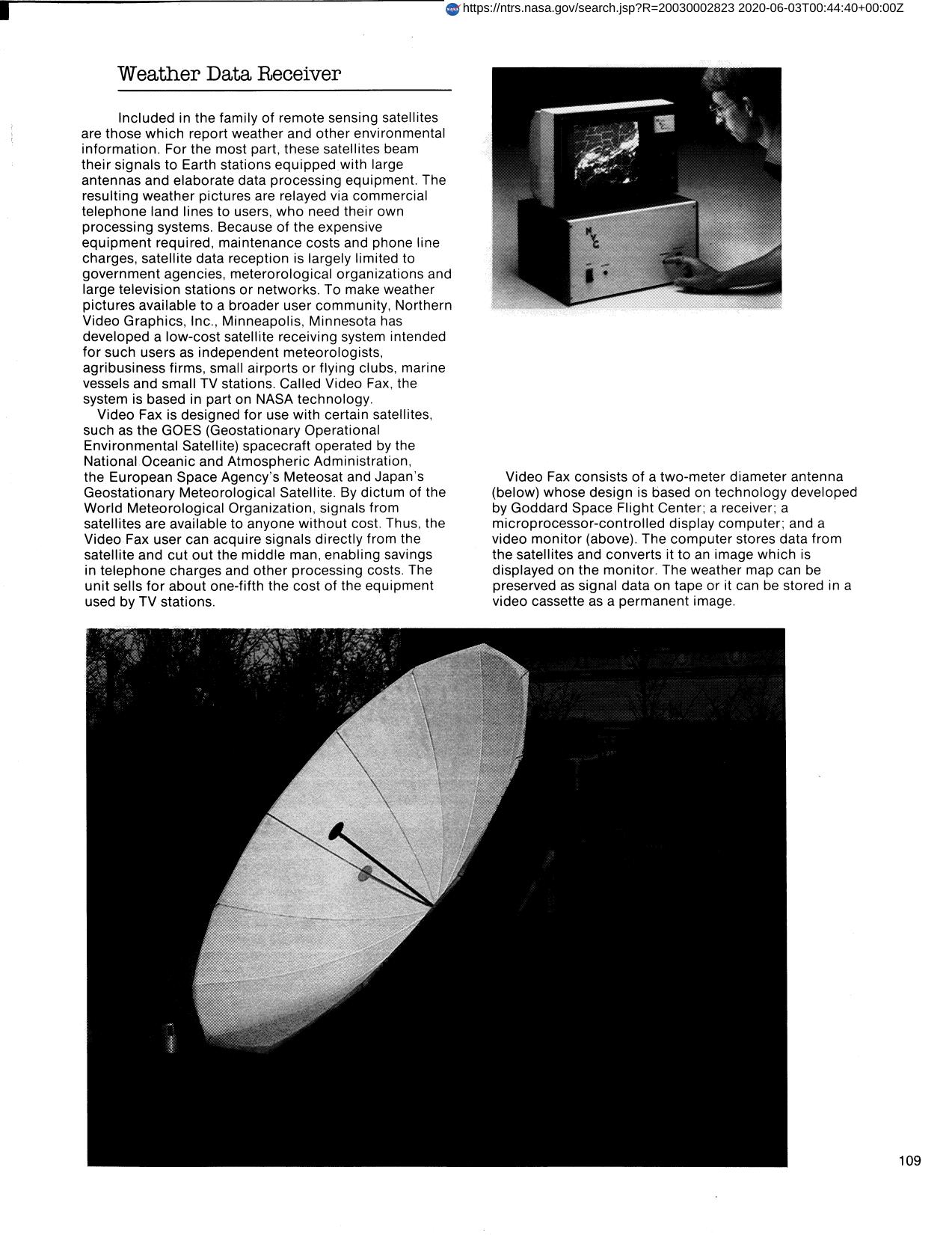
Weather Data Receiver
Northern Video Graphics, Inc. developed a low-cost satellite receiving system for users such as independent meteorologists, agribusiness firms, small airports or flying clubs, marine vessels and small TV stations. Called Video Fax, it is designed for use with certain satellites; the GOES (Geostationary Operational Environmental Satellite) spacecraft operated by the National Oceanic and Atmospheric Administration, the European Space Agency's Meteosat and Japan's Geostationary Meteorological Satellite. By dictum of the World Meteorological Organization, signals from satellites are available to anyone without cost so the Video Fax user can acquire signals directly from the satellite and cut out the middle man, enabling savings. Unit sells for about one-fifth the cost of the equipment used by TV stations. It consists of a two-meter antenna; a receiver; a microprocessor-controlled display computer; and a video monitor. Computer stores data from the satellites and converts it to an image which is displayed on the monitor. Weather map can be preserved as signal data on tape, or it can be stored in a video cassette as a permanent image.
Full article: http://hdl.handle.net/hdl:2060/20030002823

Weather Data Receiver

Weather Data Receiver













